UNIT 3.4
MONEY & MONETARY POLICY
3.4.1 • Types of money;
3.4.2 • Value of money;
3.4.3 • Nature and functions of money;
3.4.4 • Definitions of banking, banking system and its institutions;
3.4.5 • Financial intermediaries;
3.4.6 • Role of State Bank;
3.4.7 • The supply of money and interest rate policy.
THE NATURE OF MONEY
Money is anything which is used as a medium of exchange or any thing which is acceptable for settlement of debts. These definitions are much wider in scope and do not exactly define money. Following are some other definitions which describe the nature of money.
Crowther says “ Money is anything which generally acceptable as a medium of exchange and at the same time it acts as a measure and store of value.”
There are some definitions which stress on the legal aspect of money. For example:
(a) According to J.M. Keynes: "Money means that by delivery of which debts contracts and price contracts are discharged and in the shape of which a store of general power is held." In the words of Prof. Knap; "Anything which is declared as money by the government becomes money."
ALTERNATIVE APPROACHES TO THE DEFINITION OF MONEY
There are also other approaches towards the definitions of money.
1. Traditional approach
According to the traditional approach, money is regarded only as a medium of exchange. This definition emphasizes on the liquidity aspect of money and is expressed as M= C+D
Where M means Money, C stands for currency and D is demand deposits.
2. Monetarist approach
According: to Milton Friedman and other monetarists, money is a temporary abode of purchasing power. Money includes currency (C), demand deposits (D) and time deposits, (T) = M= C+D+T.
3. Liquidity approach
The liquidity approach of money includes all the assets which are highly liquid, i.e., the assets which can be converted into money quickly. Therefore currency, deposits in current and saving accounts, time deposits, shares etc. are components of money. The components of monetary assets in
M=M1+M2+M3
M = Money Asses, M1 Currency in circulation + demand deposits with scheduled banks and other deposits with SBP (Most liquid form of money), M2= M1+ time deposits with scheduled banks. ( Includes Less liquid assets), M3= M2 + NDFC bearer certificates + deposits of national saving schemes + deposits of co-operative banks. (Includes Least liquid assets)
NEAR MONEY
MEANING
The assets which can be easily and quickly converted into money without loss are called near money.
Near money or non-monetary liquid assets chiefly consist of the debts of financial institutions and of the federal government. Near money or money substitutes include time and saving deposits of commercial banks, saving deposits in saving banks, treasury bills, bills of exchange, short term debts of federal Government etc. Near money though it possesses high degree of liquidity, yet it is not generally acceptable as a medium of exchange. It is not legally payable on demand as well. It can, however, be readily converted into money as and when needed at a very little cost.
Importance of near money
As near money can be readily converted into currency or demand deposits, therefore it plays important role in economy. Greater use of near money facilitates business payment and receipts and therefore it encourages more business transactions. Use of near money instruments like bills of exchange encourage trade and economic activities. The increase or decrease in the use of near money affects the rate of community's saving and spending. The greater the amount of wealth in the form of near money, the greater is the tendency to consume out of this income. This economize the use legal money. Secondly, as the near money can be easily converted into cash, therefore, it directly affects the money supply.
TYPES OF MONEY
Following are the three main types of money
(a) Metallic money
(b) Paper money
(c) Bank money
1. Metallic money
Money made of metal is called metallic money.
Metallic money consists of coins, made of gold, silver, copper etc.
Following are two types of metallic money
(i) Full bodied money
The full bodied money is that whose face value is equal to the value of the metal contained in it.
(ii) Token money
The money whose face value is higher than its intrinsic value.
2. Paper money
Money made of paper is called paper money. It consists of the notes issued by the central bank. The paper money is the most popular medium of exchange these days. Paper currency may be representative, convertible or fiat.
3. Standard money
It is the money of account. In other words it is the in term of which, the prices debts and other transactions are expressed.
4. Legal Tender Money
Money which can be legally used for the settlement of debts is called legal tender money. Or something which is declared money by the law of the country is called legal tender money. It may be limited or unlimited legal tender.
(i) Unlimited legal tender money
It is the form of legal money which can be used for the settlement of debts up to any amount. In
(ii) Limited legal tender money
It is that legal money which can be only used for the settlement of debts upto a certain limit only. In
5. Bank money
Money which is not legal money but used as a medium of exchange due to the confidence in issuing authority. Bank money chiefly consists of cheques, bills of exchange and drafts.
6. Commodity money
When commodities in their own form used as money it is called commodity money. Usually it is some valuable commodities such as gold or silver.
QUANTITY THEORY OF MONEY
VALUE OF MONEY
Value of money means its purchasing power i.e., the quantity of goods and services that a unit of money can purchase. Quantity theory of money explains the changes in the general price level and the value of money. There is inverse relationship between the value of money and the general price level. When price level increases value of money decreases and vice versa.
Statement of The Theory
According to the quantity theory of money,
"Other things being equal, if the quantity of money is doubled, the price level will also rise to double and the value of money will be halved and vice versa"
The value of money depends upon its quantity. Quantity of money and its value change not only in the opposite directions but also by the same proportion. For example, 10% increase in the quantity of money will raise the general price level by 10% and value of money will fall exactly by 10%.
Fisher's Equation of Exchange:-
The theory can best be explained with the help of Fisher's equation of exchange this equation is of the following form.
MV= PT
Here P = General Price Level
T = Transactions to be made by money M = Quantity of Money V = Velocity of circulation of M
Fisher assumes that T and V remain constant in the short period of time. Therefore P changes directly with M. In other words value of money changes inversely with M or the quantity of money in circulation.
Suppose:- M = 100 V = 5 T = 100 P = ?
P=MV/T or P =100x5/100=5
P = 5 and since value of money = 1/P, therefore it is 1/5
Now suppose M = 200 V = 5 T = 100 P = ?
P=200x5/100 =10
P= 10 and as Value of money is = 1/P i.e, 1/10. It is clear from the example that price level has doubled and value of money is one halved due to the fact that quantity of money has been doubled.
ASSUMPTIONS OF THE THEORY
This theory is based upon the following assumptions.
(1) Full Employment
This theory assumes that there is full employment in the economy. It implies that all the labour force and other resources are fully employed.
(2)
This theory supposes that changes in money affects prices in the economy, but any 'change in price does not have any effect on supply of money
(3) Velocity of Money is Constant
This theory assumes that velocity of circulation of money is a constant factor and it does not changes in the short run.
(4) Volume of Trade Remains Constant
The total output of the economy and the total volume of trade does not change in the economy.
CRITICISM
Quantity theory of money has been criticized on the following grounds.
1- Static Theory
This is just a static theory and it can not be applied to a dynamic world. It is because in this world, tastes, population, quantity and quantity of demand and natural resources are constantly changing. If we apply this theory on the changing world, we can not get the desired results.
2- Unrealistic Assumptions
Assumptions of the theory are not based on reality. V,V and T change not only in the long-run but also in the short-run.
3- Interdependent Variables
Fisher assumes that variables of the equation are independent of each otner. Practically, they are interdependent. Any change in M will also effect V and T. Therefore value of money will not change proportionately.
4- Relationship Between M and P
No doubt there is clear and close relationship between M and P but it is not necessary that
change in M will cause a proportionate change in P. Change in P as a result of change in M depends upon the economic condition of a country. During depression, an increase in M will have minor effects on P. On the other hand P will increase more than proportionately and due to change in M during the period of inflation.
5- Medium of Exchange
The theory assumes that money works only as a medium of exchange. When additional money is put into circulation it is used for economic transactions. This theory ignores money as a store of value. If additional money is hoarded (stored) by the people, the price level will not rise and value of money will not fall.
6- Full Employment
According to Keynes, this theory is true only after the level of full employment has been achieved. At less than full employment level, increase in the supply of money will increase the quantity of goods and services. Therefore the price level and value of money will remain unchanged.
7. Exact Relations
This theory assumes exact relation between quantity of money and value of money. But practically it has never been observed this exact relation ship between the two.
CONCLUSION:-
Despite of all the weak points, the theory has a basic truth. Whenever there has been over issue of paper currency, price, have definitely risen. The currency history of every country can be studied in this connection. Also this theory has much practical value to formulate policies for solving the problems of inflation or deflation.
FUNCTIONS OF MONEY
Money is anything which is used as a medium of exchange or any thing which is acceptable for settlement of debts. These definitions are much wider in scope and do not exactly define money.
Following are some other definitions which describe the nature of money.
Crowther says “ Money is anything which generally acceptable as a medium of exchange and at the same time it acts as a measure and store of value.”
There are some definitions which stress on the legal aspect of money. For example:
According to J.M. Keynes: "Money means that by delivery of which debts contracts and price contracts are discharged and in the shape of which a store of general power is held." In the words of Prof. Knap; "Anything which is declared as money by the government becomes money."
Generally money is used as a medium of exchange but there are many other important functions performed by money. These functions are discussed in brief.
1. Medium of Exchange:
The sale or purchase of goods is done through money. The use of money as a medium of exchange has facilitated transactions in economy. The use of money as medium of exchange has encouraged more specialization.
2. Measure of Value
Money is used to measure the value of all goods and services. Without money it is not possible to measure the value of different things and then purchase them. Also with the help of money we can compare the values of different things.
3. Standard of deferred payments.
One important function of money is that it is used as a mean of settling debts maturing in the future, therefore money is the basis of credit.
4. Store of value.
Money also acts as a store of value. This function of money is useful because most of us do not want to spend our income immediately upon receiving it. Money, held in the form of cash, is considered highly liquid asset.
5. Unit of account.
Another important function of money is that it provides a unit of account. Without money we can not maintain business and public accounts. It is money which helps us to keep a record of all transactions.
6. Encourages specialization
The use of money has helped in removing the difficulties of barter. Now every one can specialize in some specific field, earn money and then fulfill all his need through the medium of money.
7. Economic policies.
Money is an important instrument of economic policy of the government. For the achievement of economic growth and management of the economy, money is the most powerful factor.
8. Distribution of national income.
Money facilitates the distribution of national income among the various factors of production. It also helps in bringing justice in distribution.
9. Basis of credit system.
Banks create credit on the basis of their cash reserves. Any change in the volume of money is brought about mainly by an increase or decrease in money supply.
FINANCIAL INTERMEDIARIES
A financial intermediary is an institution which links lenders with borrowers. It gets deposits from lenders and re_lend them to borrowers. In other words it provide a link between saver and investors.
In
(a) banks;
(b) insurance companies, pension funds, unit trust companies and investment trust companies.
In spite of competition from insurance companies and other financial institutions, banks are the major financial intermediaries in
ROLE OR IMPORTANCE OF FINANCIAL INTERMEDIARIES:
The financial intermediaries in an economy, such as banks etc act as a medium by which surplus units in the economy can lend to deficit units. Financial intermediaries develop the facilities and financial instruments which make this lending and borrowing possible.
COMMERCIAL BANKING
Meaning
Banker is a person accepting the deposits of people for the purpose of lending or making investment. These deposits are payable on demand or otherwise and withdraw able by cheques, drafts of otherwise.
In simple word a Bank is an institution which deals in money. It receives the savings of the people as deposits, which is a loan for a bank and pays interest on it. It gives this amount of money to business enterprises as loans and receives interest on it. Thus bank is an institution which deals in credit to get profit.
TYPES OF BANKS
There are different types of banks which operate within a banking system
(a) Clearing banks
These are the banks which operate the 'clearing system' for settling payments e.g
payments by cheque to bank customers.
(b) Merchant banks
This type of banks offer services, often of a specialized nature, to corporate customers.
(c) Commercial banks
The term refer to any bank which makes commercial banking transactions with customers.
THE IMPORTANCE OF BANKS
In a country like
well organized banking system is the need of the day. There is an acute shortage of
capital in
formation by maintaining a balance between requirements and availabilities and in
directing physical resources into desired channels.
Commercial banks are highly important for economic development of a country
like
1) Inducement to save.
People are usually reluctant to save money for two reasons , first they fear stealing of money and secondly Danger of decrease in value due to inflation.
Banks have eliminated these risks by providing security of cash and reasonable profits on deposits. Thus banks have helped in increasing the saving rate of the people which is a major financial source available for investment in
2) Transfer of money.
Banks help in transferring of money from one place to another. This service of banks not only save the time of business people but also guarantees the safety of their cash. Because of this facility provided by commercial banks there is greater business activity and increase in production in the economy.
3) Stimulate investment.
Deposits of commercial banks are used for lending and making investments. Thus banks provide funds for the purpose of investment. This function of commercial banks helps in stimulating investment and economic development of
4) Expansion of foreign trade.
The present volume of
5) Financing of govt. projects.
Some times government needs funds for non developmental purposes or for financing its development projects. These funds are usually provided by the domestic banking system.
6) Provide employment opportunities.
In addition to providing jobs to several thousand people in various branches, Banking system creates job and self employment opportunities by providing credit facility to young unemployed persons.
7) Capital formation.
Capital formation is a prerequisite for economic development. The process of capital formation needs huge financial resources either from internal or from external resources. Banking system of
8) Agency services
Banks provide various kind of agency services to people and institutions. People pay utility bills through banks. Different types of govt. payments are also made through banks.
9) Medium of monetary policy
State bank of
Above discussion shows that efficient banking system is prerequisite for development of any country. With out banks one cannot think of national saving or monetary policy or present level of trade and commerce or establishment of heavy industries etc. Thus banks are vital for the economic development of
CENTRAL BANKING
Definition
A central bank is an institution which issues currency and controls the supply of money for the welfare of the community, development and stability of the economy.
Profit earning is only the second objective of the central bank while following are the main responsibilities of a central bank.
(1) To manage credit and banking system of the country.
(2) To act as a banker and adviser to the government.
(3) To supervise and develop banking system in the country.
The State Bank of
The role of State Rank of Pakistan is, therefore, promotional and developmental., The State Bank of
(i) Growth of banking system.
At the time of partition, there were only two Muslim scheduled banks, Habib Bank Limited, and Australasia Bank operating in
(ii) Assistance to specialized financial institutions.
The State Bank of
(iii) Monetary and credit policy.
The bank is pursuing a monetary policy which aims at:
(i) checking inflationary pressure and
(ii) ensuring adequate availability of bank finance for productive activities in general and the priority sectors e.g. agriculture, industry, housing etc in particular.
(iv) Export finance scheme.
Under the State Bank Finance Scheme, the banks are providing finance to the exports at the concessional rates. The refinance, in turn, is provided by the State Bank at low rate of interest.
(v) Credit targets for priority sectors.
The State Bank gives targets to commercial banks for providing small loans in the fields of business, industry, agriculture, housing every year. The prescribing of credit target for priority sectors has greatly helped in raising production.
(vi) Islamisation of financial system.
As a part of the government policy, the State Bank of
(vii) Establishment of banking publicity board.
The State Bank initiated to set up Banking Publicity Board in 1959 for developing banking habits among the people and for mobilization of savings in the length and breadth of the country.
(viii) Managed float.
The SBP fixes the
(ix) raining scheme.
State Bank started a training scheme for imparting banking knowledge to the persons working in the banks and to those who are to join banks as their profession. The training scheme was a success and it produced a large number of trained bankers and financial experts for the various banking concerns.
CREDIT CONTROL BY CENTRAL BANK/SBP
Meaning
Credit control policy or Monetary policy may be defined as "that branch of economic policy which is concerned with the regulation of the availability or supply, the costs and the directions of credit."
OBJECTIVES or GOALS
The objectives of credit control of monetary policy have been different at different times in different countries according to the economic situations and problems faced by them.
In the modern times economic development with monetary stability is accepted as the most important goal of credit control.
The main objective of this credit-control function is to save economy from inflation and deflation and to stabilize the economy and prices.
METHODS OF CREDIT CONTROL
Credit control is one of the most important responsibility of a central bank. Central bank of a country can control credit by following two methods.
(1) Qualitative controls (2) Quantitative controls
QUANTITATIVE CONTROLS
Quantitative controls are used to expand or contract the total quantity (overall size) of credit. These controls are of the following kinds:
1. Bank rate policy
2. Open market operations .
3. Variable reserve ratios
4. Liquidity ratio
5. Credit rationing
These are explained as under.
i. Bank Rate (or Discount Rate) Policy
Bank rate is the rate at which central bank rediscounts bill of exchange or provides credit to commercial banks. For controlling credit central bank may increase or decrease bank rate. When bank rate is raised, other bank's interest rates on advances also move up. When bank rate is decreased, other banks' interest rates on advances also go down. Borrowing from banks is discouraged or encouraged and, as a result, the rate of monetary expansion decreases or increases.
2. Open Market Operation
Buying and selling of government securities by the central bank with a view to influencing money supply is called open market operations. When the central bank sells securities the buyers make payment for these to the central bank through commercial banks. A portion of commercial banks' cash flows to the central bank. As a result, the lending and financing power of banks decreases which leads to reduction in the rate of credit expansion. The purchase of securities by the central bank has the reverse effects.
3. Variable Reserve Ratios
The amount of money which the banks are legally required to keep with the central bank is termed legal cash reserve ratio or requirement. It is a certain percentage of deposits. If the cash reserve ratio is raised, say from 5% to 7% of total deposits, the lending and financing power of banks will contract accordingly. This will cause fall in the rate of money expansion. A decrease in ratio has an opposite effect.
4. Liquidity Ratio
In
5. Credit Rationing
In order to keep the total credit expansion within desirable limits, the central bank may recommend ceilings (an upper limit) on the overall credit extended by each commercial bank.
QUALITATIVE CONTROLS
These include:
(1) Moral suasion. (2) Method of Publicity. (3) Direct Action Selective controls are mainly, aimed at influencing the direction or distribution of credit.
(1) Moral Suasion
By virtue of its special position, the central bank can persuade commercial banks to follow a specific credit policy. In this connection the central bank can employ oral or written appeals or warnings.
(2) Publicity
The central bank through its different publications may give publicity to desirable credit policy in the form of a few broad principles. The banks may take guidance from this in respect of their lending and financing operations.
(3) Direct Action
if commercial banks do not follow the credit guidelines of central bank then central bank can impose a penalty or refuse to discount bill of exchanges of commercial banks.
LIMITATIONS OF CREDIT CONTROL POLICY or DIFFICULTIES IN CONTROLLING CREDIT
Credit control or monetary policy has many limitations. In other words, there are several difficulties in the way of the central bank to control credit.
1. Absence of developed money markets.
In underdeveloped countries, central bank control over bank credit is rendered very difficult by the absence of well-developed money markets.
2. Existence of non-monetized sector.
In less developed countries there exists a large non-monetized and rural subsistence sector. Thus a big section of the community is quite unaffected by monetary policy.
3. Large-scale deficit financing.
A large-scale deficit financing by the government may make the central bank powerless in controlling the amount of credit and inflationary pressures. Thus, unless it is prevented, the credit control measures will have little value.
4. Cooperation of banks.
It is very difficult for a central bank to control credit if commercial banks do not extend their full cooperation.
5. Conflicting objectives.
The greatest difficulty in the way of the central bank in controlling credit is the simultaneous achievement of conflicting objectives. For example controlling inflation and increasing employment opportunities are conflicting objects.

